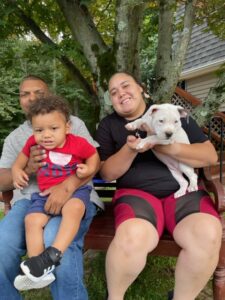Adding a new puppy to your household can be exciting. However, the process requires extra care and thoughtfulness when you already have a resident dog. As one of the country’s leading dog experts, I’m here to guide you in making this transition as smooth as possible for your dogs and your family.
Critical Considerations Before Bringing Home a Puppy
- Assess Your Resident Dog’s Temperament: Not all dogs enjoy the company of other canines. Consider how your current dog interacts with other dogs during walks or playdates.
- Age and Energy Levels: An older dog might not appreciate a high-energy puppy constantly seeking play. At the same time, two young dogs might end up being too much of a handful.
- Size Differences: Size can influence play styles and potential risks. A large breed puppy might accidentally injure a smaller adult dog.
- Financial Consideration: Two dogs mean double the expenses. From vet visits to food and toys, ensure you’re financially prepared.
- Space: Do you have enough room for two dogs to live and play comfortably in your home?

Proper Introductions
Introducing your new puppy to your resident dog is a delicate process that can shape their future relationship.
- Neutral Territory: The first meeting should happen in a neutral space, like a park, to prevent territorial behavior.
- Short and Sweet: Keep the first introduction short to prevent overwhelming both dogs.
- Leashed Introduction: Keep both dogs on leashes at a distance and let them observe each other. Gradually let them sniff and interact as long as they seem calm and curious.
- Watch for Body Language: Positive signs include wagging tails, relaxed bodies, and playful bows. If you observe growling, raised fur, or stiff postures, it’s essential to separate them and try again later.

General Do’s and Don’ts
Do’s:
- Give Equal Attention: While it’s tempting to dote on the new puppy, ensure your resident dog gets ample love and attention to prevent jealousy.
- Maintain Separate Spaces Initially: Each dog should have a bed, toys, and feeding bowls. This minimizes potential resource guarding.
- Train Separately: While group play is excellent, initial training sessions should be conducted separately to ensure each dog can focus.
- Monitor Playtime: Play between an adult dog and a puppy can get rough. Always supervise to ensure it doesn’t escalate to aggression.
Don’ts:
- Don’t Force Interaction: Let the dogs choose when and how they want to interact. Pushing them together can lead to stress and potential fights.
- Don’t Neglect Training: With a new puppy, it’s essential to maintain training routines for both dogs.
- Don’t Leave Them Alone Together Immediately: Until you’re sure of their relationship stability, keeping them in separate areas when unsupervised is safer.
Bringing a new puppy home when you have a resident dog requires patience, observation, and a lot of love. With the right strategies, you can ensure both dogs form a bond and coexist harmoniously.



